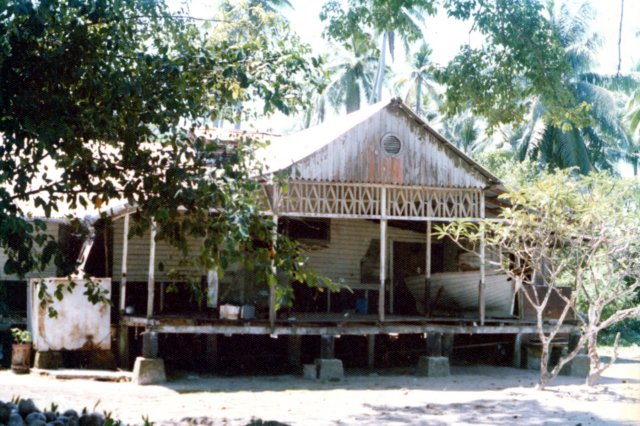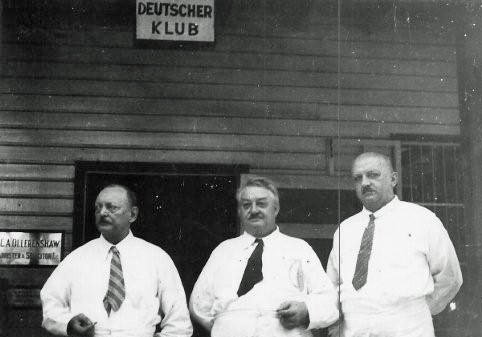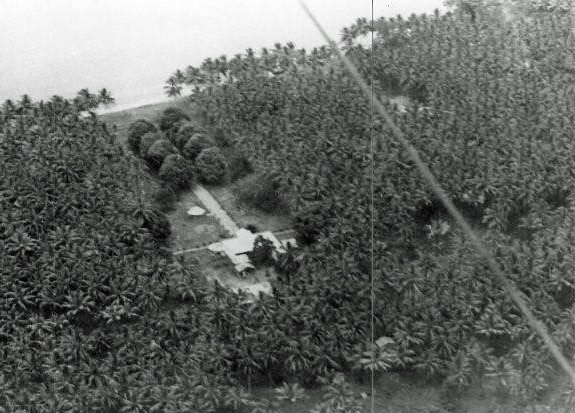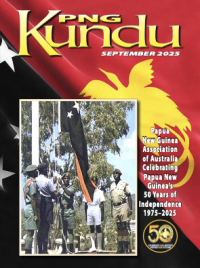Emma Coe, known as Queen Emma, and Phoebe Coe, Papua New Guinea. ~1878 – 1944
 Emma and Phoebe were daughters to Joana Coe née Le’utu, of Samoa’s Malietoa Royal family, and Jonas Myndersee Coe, the US Consul in Apia. Jonas married six times and had 18 children.
Emma and Phoebe were daughters to Joana Coe née Le’utu, of Samoa’s Malietoa Royal family, and Jonas Myndersee Coe, the US Consul in Apia. Jonas married six times and had 18 children.
Emma was born on 26 September 1850 and died 21 July 1913. Her sister, Phoebe, was born 5 June 1863 and died 28 May 1944. They shared three sisters and three brothers from their father’s first of six marriages.
Emma was married twice: first to James Forsayth and then to Paul Kolbe. She had two children from her first marriage. Her son, James Myndersee Coe-Forsayth, survived Emma, however her daughter died very young.
Emma has been referred to as “the epitome of promiscuity” because of her many known and alleged “liaisons” and “dalliances”.
Phoebe had 12 children: three girls and five boys, although three died very young. She married a Danish scientist, Richard Heinrich Parkinson, from the Danish Royal family, author of Dreissig Jahre in der Sudsee (Thirty Years in the South Seas) which was first published in 1907.
Emma was schooled in San Francisco and Sydney at Catholic schools, experiences she did not enjoy. After the death of her first husband, James Forsayth, Emma had a de facto relationship with Thomas Farrell. Their business venture in and around Samoa failed. A German firm, DHPG, offered Farrell and Emma a franchise on Mioko, Duke of York Islands, East New Britain, Papua New Guinea. This move proved to be very fortuitous for Emma.
Emma was a very shrewd, entrepreneurial person who worked for and against whoever suited her ambitions at the time. These included commercial enterprises, royalty, local tribes, head-men, government agencies and religious organizations. She began her “empire” on Mioko, Duke of York Islands, in 1878. As well as acquiring instant wealth from the debris of the Marquis De Rays expedition, Emma saw the value in drying coconuts for copra. She acquired land on the Gazelle Peninsula, where she had her mansion Gunantambu built at Ralum in 1886, equipped in part with furnishings of Robert Louis Stevenson which she purchased in Samoa. Over the years Emma’s ’empire” consisted of more than 60 000 hectares of plantations over many areas of New Britain, New Ireland, Bougainville and various smaller islands. Emma had a personal bodyguard of Buka boys armed with rifles. She cleverly registered her land with the American consul in Sydney. It is estimated that she employed more than 1000 nationals and about 50 whites to manage and operate her holdings. As well as copra, Emma dabbled in cocoa, cotton, kapok, vanilla and trepang amongst other investments.
Gunantambu was the social hub of the Gazelle Peninsula for many years, with many stories and scandals to boot. In 1890, Kokopo (Herbertshohe) was established and Emma had the first hotel built there in 1900 called the Hotel Furst-Bismarck (situated near the site of the current Kokopo Beach Resort). By 1909, Emma was nearly blind and suffering from diabetes. She sold her estate to Rudolf Wahlen for approximately DM 4 million. Emma lived in Prince Albert Street, Mosman, for a while. She visited Monte Carlo in 1913 with husband Paul Kolbe who died two days before Emma. The official death certificate discounts the many rumours surrounding their deaths. They were cremated and buried at Ralum. In 1924 their son reinterred the urns at Old South Head cemetery in Sydney landmarked by two very large, ornate headstones.
Phoebe was recognized by all and sundry as a benevolent, caring and sensitive person. She was known to many of the locals on the Gazelle as “Miti” (lady of high stature). Educated at a Samoan Catholic school, Phoebe showed a different personality to her rebellious sister Emma. Phoebe went to Mioko in 1881. She and her husband Richard were employed by Emma to plant the first commercial plantations in PNG. Richard undertook many scientific investigations and studies. Phoebe raised her children (as well as countless orphans and relatives) and recruited labourers for the workforce. Phoebe and Richard had similar bodyguards to Emma. The family lived at Malapau then Kuradui. In 1909 Richard died of framboesia. After WW1 and expropriations, Phoebe found herself destitute and lived with some of her children at Sum Sum Plantation; with her grandson Rudi Diercke near Kieta; Portland Island, New Hanover; Komalu Plantation, west New Ireland and finally imprisoned with Rudi at Bo Prisoner-Of-War camp, Namatanai, east New Ireland. Phoebe died in the POW camp in 1944 and was buried by Rudi.
Locating the gravesite post WW2 was difficult until finally in 2002, Phoebe’s grave was discovered and her remains reinterred next to Richard’s grave at the Kuradui family cemetery (refer ABC-tv’s Australian Story, “Finding Phoebe”, 29 March 2004).
Of Phoebe’s three daughters, Helene (Nellie) was quite infamous. Amongst a number of incidents, Nellie was gaoled in Rabaul for one month after whipping a German officer who tried to take advantage of Nellie’s younger sister Dolly. Nellie was charged with “disparaging behaviour towards the uniform of the Emperor and for insulting an officer of the Emperor”. The German officer had to leave the army because he was publicly humiliated by a woman!
According to a Dr Burger from Stuttgart who was visiting Nellie in 1912, along with her husband Carl Diercke and son Rudi at Tinputz, Bougainville, he saw Nellie physically beat a local male because he was being foolhardy with her horse. The assaulted man gathered his clan, and fully armed they advanced on Nellie threatening to kill her. Nellie mounted her horse, drew out her pistol, fired into the air several times and ordered the locals to drop their arms and go home. They did! Dr Burger decided to paint a picture of the event.
Summary by Chris Diercke. Chris, born in Kokopo, ENB, is Phoebe’s great grandson, Nellie’s grandson and Rudi’s son.


































